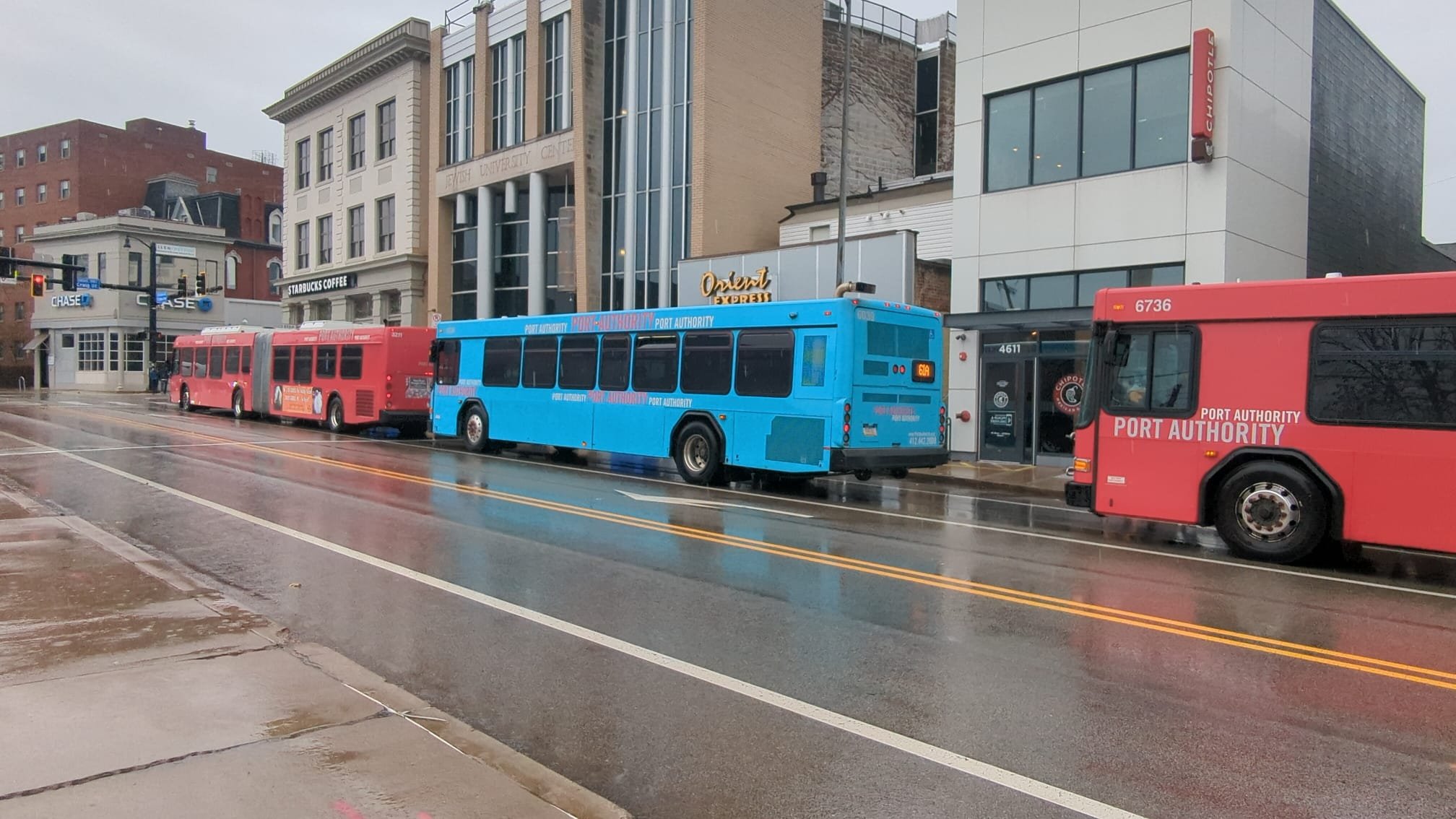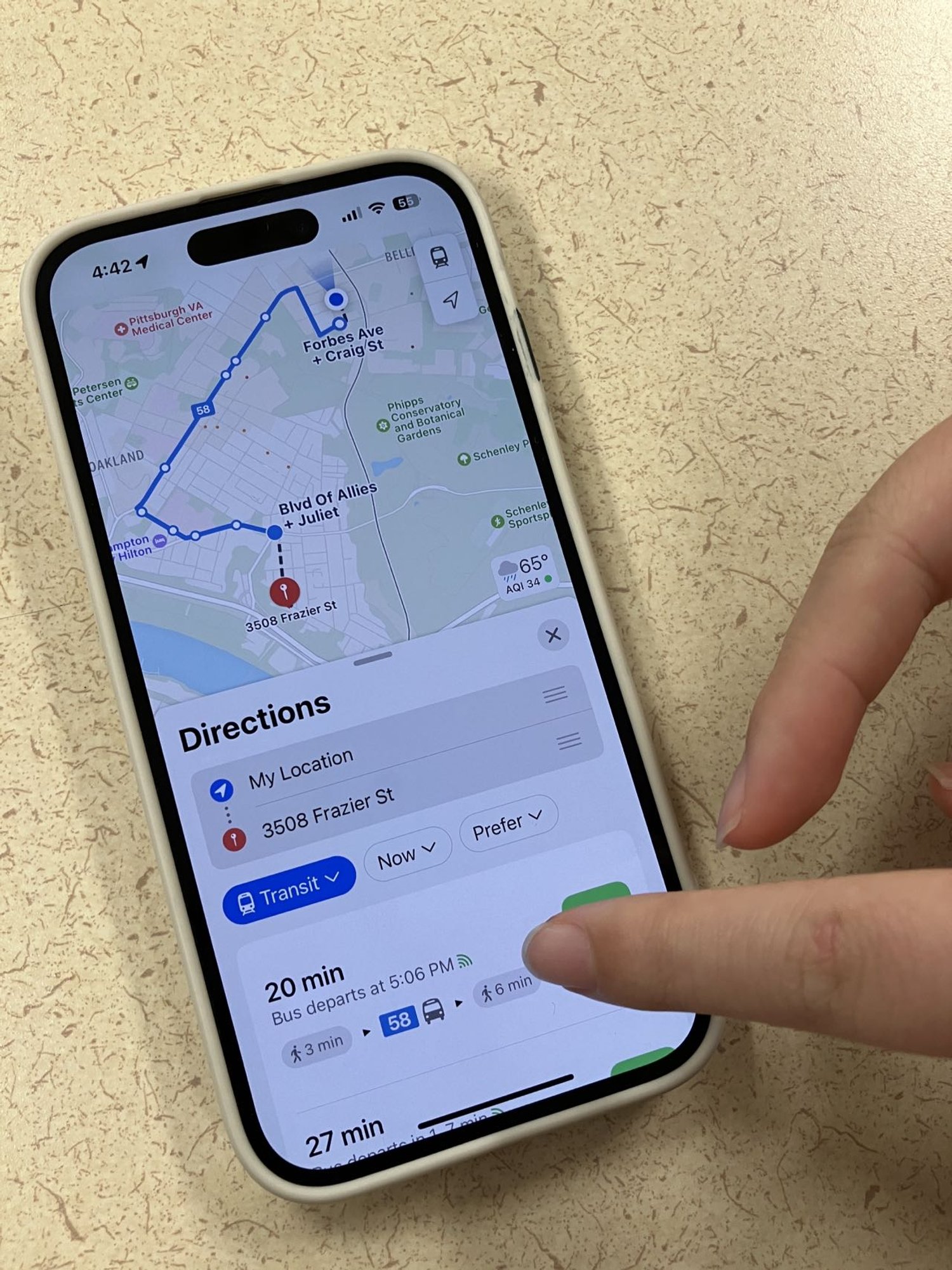AR Your Guide
AR Your Guide is an that provides more accessible information to overcome the anxiety of riding a bus via the interaction with augmented reality.
My Contributions
In the research phase, I worked on the UX research. I managed to make a connection with and interview an expert, which greatly contributed to the research.
In the prototyping phase, I worked with another designer to develop the prototype for the solution.
Outcomes
The final prototype was tested with more than 10 bus riders at Pittsburgh and received strong positive feedback. The final solution also received positive feedback after being presented to the class and relevant experts. It was featured on the news of Mobility21.
Context
Pittsburgh has an extensive public transportation system that includes buses, light rails, inclines and others. It has been serving residents and travelers across Pittsburgh since the 19th century. However, while it benefits many people, it also has many problems and significant room for improvement. In the Integrated Product Development Method class at CMU, my group was assigned an initial prompt of improving the Pittsburgh public transit experience.
INITIAL PROMPT
How might we improve the Pittsburgh public transit experience?
DISCOVERY
Concept Mapping & “5 Whys”: Focus on Improving Pittsburgh Bus Waiting & Riding Experience
Since improving public transit experience was a very broad and ambiguous concept, we first did concept mapping to get a general idea about the domain and determined the part we wanted to dive deeper. Then, we used the “5 Whys” method to frame the problem and map out the core of the issue. By doing this activity, we narrowed down the focus of our problem to “improving the bus waiting and riding experience in Pittsburgh.”
36 Survey Responses: Bus Riders Desired Accessible & Accurate Information
We distributed online surveys among Pittsburgh local groups on Facebook, Reddit and Nextdoor, and received 36 responses.
The majority of the respondents were students, full-time employed or retired residents aged 16-45. Half of them took the bus every day and many took at least 1-3 times a day. Therefore, the bus riding experience was relevant to a significant number of people in Pittsburgh.
We received many important responses via the survey. Through one key question, we learned that for bus riders, the needs at the top priorities were accurate information, safety, frequency of the buses, and shorter wait time. This helped us to further frame the problem statement.
12 User & Expert Interviews: Inaccurate Info Sparked Uncertainty & Anxiety
Our team conducted 2 expert interviews, 7 bus rider interviews and 3 bus driver interviews. Among them, I conducted 1 expert interview and 4 bus rider interviews. The interview with Lisa Kay from Mobility21 - an organization at CMU that focuses on transportation - informed us a lot about the current landscape of bus transportation at Pittsburgh.
The interview data was integrated and analyzed through affinity mapping. Through all these secondary and primary researches, we were able to do task analysis and came up with a common Job-To-Be-Done map as well as some significant product opportunity gaps, which was analyzed through value opportunity analysis shown below.
DEFINE
How might we provide accurate and accessible trip information to overcome the anxiety of riding the bus?
IDEATION
Brainstorming & Idea Selection: The “Crazy 8”
Each member of the team came up with 8 ideas that could be as crazy as possible. Then, we voted 5 ideas that we liked and would be possible for us to develop on in Mural.
Idea Selection & Validation: Riders Like the AR
The ideas won in the voting were integrated into 3 main ideas: bus information kiosk, bus exclusive lane and AR Your Guide. 3 concept posters showcasing these ideas were created and got critique from the class via post-it notes. I worked on the AR Your Guide poster with 2 other teammates.
The idea that got most positive feedback and excitement was the AR Your Guide. Therefore, we decided to develop this idea more with prototyping and testing.
PROTOTYPING
Wireframing
At this stage, we considered AR Your Guide as an add-on feature in existing transportation app. After selecting the route to be taken, users could launch the AR guide by simply clicking a button and then they could interact with the app similar to the Pokemon Go game. The AR provides intuitive and key guide for finding the bus stop and riding the bus.
Key Features: An AR Guide Who Helps You Navigate Through Challenges of Pittsburgh Bus Riding
Launching
By simply clicking a button in the Transit app, riders can launch the AR guide. It will illustrate how to start using the AR.
2D Map
During the testing, about 90% of the participants mentioned they would like to have a 2D map so that they could have a big picture view about the route and know what’s coming next.
Showing Bus Stop
Some riders mentioned they had a hard time seeing the tiny bus stop sign, so our AR Your Guide will indicate the bus stop for them and allow riders to notice it even from a distance
Safety
When developing the prototype and testing with users, I noticed using AR when walking caused concern on safety, so I added the feature that reminded riders of safety when crossing intersection.
Boarding Instruction
For riders taking bus for the first time in Pittsburgh, the AR guide shows clear instruction on where to scan card or pay with cash.
Route Tracking & Stop Request Instruction
On the bus, the AR guide shows the number of stops away from the destination stop. When reaching the stop, it gives instruction on how to request stop.
Reflection
For this project, it was particularly important to frame a wicked problem into a problem statement that could inform the product criteria. When deciding which area to focus on and which idea to select, the current landscape, internal and external resources and team’s interest were the key factors for this project.
While the final proposed solution received very positive feedback from the class and the riders, I also found during testing and received critique that there are still opportunity gaps on the aspects of privacy and battery draining. For the next step, I hope we could collaborate with engineers to see if AR Your Guide could actually be developed and if there is a way to solve the problem of AR draining the battery.















































